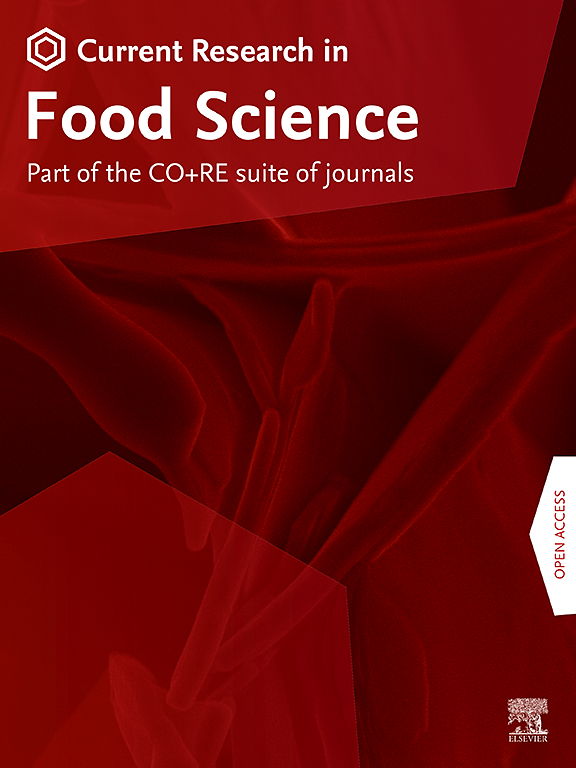Relationship between breaking load and protein composition of acidic heat-induced gels prepared from the acidic precipitate of soy flour aqueous dispersions
IF 6.2
2区 农林科学
Q1 FOOD SCIENCE & TECHNOLOGY
引用次数: 0
Abstract
As one of the constituent materials of plant-based meat, a heat-induced gel was prepared from the aqueous paste (protein-to-water ratio: 0.30–0.35) of an acidic precipitate from soy flour called AP-SF. Among the broader pH range of 4.5–7.5, heat-induced gels prepared from the AP-SF paste adjusted to a pH range of 5.0–5.5 exhibited the similar breaking load (617 gf) and displacement (5.22 mm), to that of heat-induced gels prepared from minced beef, breaking load (667 gf) and displacement (6.45 mm). The results of two experiments, that is, the addition of fractionated protein components (7S, 11S, polar lipid-associated protein (PLAP), and oil body-associated protein (OBAP)) to the original AP-SF gels and the examination of a correlation between the breaking load of AP-SF gels and the protein composition of soybean cultivars used for the AP-SF preparation suggested that 7S globulin has an ability to effectively increased the breaking load of AP-SF gels. In globulins that contribute to gelation, the correlation between the content of 7S and 11S and the breaking load is 0.75 and 0.50, respectively, and the correlation coefficient of 7S is much higher than that of 11S. Analysis using dithiothreitol (DTT)-free SDS-PAGE confirmed that homodimers of the α′ and α subunits of 7S globulin play a dominant role in the heat-induced gelation via the formation of intermolecular disulfide bonds with themselves or other protein components.

求助全文
约1分钟内获得全文
求助全文
来源期刊

Current Research in Food Science
Agricultural and Biological Sciences-Food Science
CiteScore
7.40
自引率
3.20%
发文量
232
审稿时长
84 days
期刊介绍:
Current Research in Food Science is an international peer-reviewed journal dedicated to advancing the breadth of knowledge in the field of food science. It serves as a platform for publishing original research articles and short communications that encompass a wide array of topics, including food chemistry, physics, microbiology, nutrition, nutraceuticals, process and package engineering, materials science, food sustainability, and food security. By covering these diverse areas, the journal aims to provide a comprehensive source of the latest scientific findings and technological advancements that are shaping the future of the food industry. The journal's scope is designed to address the multidisciplinary nature of food science, reflecting its commitment to promoting innovation and ensuring the safety and quality of the food supply.
 求助内容:
求助内容: 应助结果提醒方式:
应助结果提醒方式:


